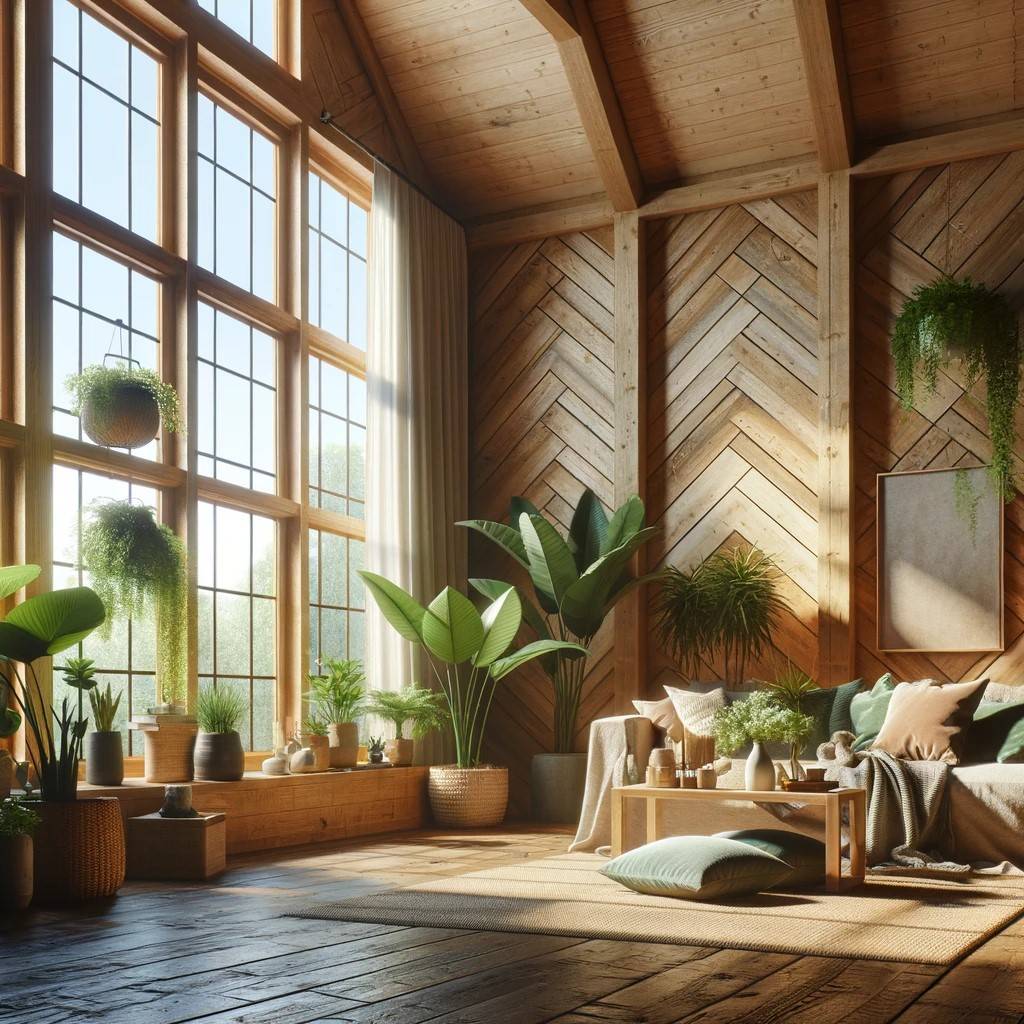Introduction
In an era where urbanization is rapidly increasing, people are spending more time indoors than ever before. This shift has led to a growing disconnect between humans and nature, resulting in various psychological and physical health challenges. In response, architects and designers have embraced biophilic design, a revolutionary concept that integrates natural elements into built environments. Biophilic design is not just about adding plants to a space; it encompasses architectural strategies that mimic nature’s patterns, materials, and spatial configurations to foster human well-being.
This architectural philosophy is reshaping how we design homes, offices, hospitals, and public spaces, making them more sustainable and beneficial for mental and physical health. As cities become more crowded and green spaces become scarce, the importance of biophilic design continues to rise.
The Principles of Biophilic Design
Biophilic design is based on several key principles that help foster a deeper connection between humans and nature within artificial environments. These principles include:
1. Maximizing Natural Light & Ventilation
One of the most essential components of biophilic design is ensuring that natural light permeates indoor spaces. Large windows, skylights, and open-concept designs allow sunlight to brighten rooms, reducing the need for artificial lighting. Ventilation is equally important; fresh air circulation enhances indoor air quality, improving respiratory health and comfort.
2. Incorporating Green Spaces & Indoor Plants
Plants are a fundamental aspect of biophilic design. Living walls, rooftop gardens, and indoor plants help improve air quality by filtering toxins and producing oxygen. Studies have shown that greenery in workspaces enhances concentration, reduces stress, and boosts overall productivity.
3. Using Organic Materials & Textures
Materials such as wood, stone, bamboo, and natural fibers create a tactile connection to nature. Unlike synthetic materials, organic textures provide warmth and authenticity, enhancing the sensory experience of a space.
4. Integrating Water Features
Water elements, such as indoor waterfalls, fountains, and aquariums, contribute to a calming ambiance. The sight and sound of flowing water can reduce stress, increase relaxation, and improve mood.
5. Designing with Nature-Inspired Patterns
Architects often incorporate fractal patterns, curves, and asymmetrical designs found in nature. These patterns have been scientifically proven to be visually pleasing and psychologically comforting.
6. Creating Spaces That Mimic Natural Environments
Natural settings like forests, meadows, and riverbanks offer refuge and a sense of security. Biophilic design seeks to replicate these environments in interiors by creating cozy nooks, varying ceiling heights, and incorporating materials that mimic landscapes.
The Psychological and Physical Benefits of Biophilic Design
The implementation of biophilic design has profound effects on human health and well-being.
1. Stress Reduction & Mental Health Improvements
Research has shown that exposure to natural elements significantly reduces cortisol levels (the stress hormone). Offices with biophilic designs report lower employee stress levels and higher job satisfaction. Hospital patients with views of greenery recover faster than those in sterile environments.
2. Increased Productivity & Creativity
Workspaces designed with biophilic elements promote cognitive function, creativity, and overall workplace efficiency. Employees in biophilic environments experience a 15% increase in productivity compared to conventional office settings.
3. Enhanced Air Quality & Physical Health
Indoor plants act as natural air purifiers, reducing pollutants like carbon dioxide, benzene, and formaldehyde. Improved air quality leads to fewer respiratory issues, allergies, and headaches.
4. Improved Sleep Patterns
Natural light exposure helps regulate the body’s circadian rhythm, promoting better sleep. People who work in environments with ample daylight experience improved sleep quality and reduced fatigue.
5. Stronger Sense of Community & Well-Being
Biophilic designs encourage social interactions by creating open, inviting spaces. Green courtyards, rooftop gardens, and communal lounges foster connections and improve overall happiness.
Sustainability & Environmental Impact
Biophilic design aligns closely with sustainability efforts. Many biophilic elements contribute to reducing energy consumption and environmental impact.
1. Energy Efficiency
Buildings designed with ample natural light reduce reliance on artificial lighting, lowering electricity consumption. Smart ventilation systems and green roofs also regulate temperature, decreasing the need for excessive heating and cooling.
2. Reduction of Urban Heat Island Effect
Urban areas tend to be hotter due to concrete and asphalt surfaces absorbing heat. Green walls and rooftop gardens mitigate this effect by providing natural insulation and cooling.
3. Water Conservation
Rainwater harvesting and greywater recycling systems are commonly integrated into biophilic architecture. These sustainable practices reduce water waste and promote resource conservation.
Future Trends in Biophilic Architecture
The future of architecture is being shaped by biophilic design principles. Some emerging trends include:
Smart Biophilic Buildings – Integrating AI and IoT to monitor air quality, humidity, and lighting to optimize indoor environments.
Vertical Forests – High-rise buildings covered in vegetation to combat pollution and promote biodiversity.
Urban Farming in Buildings – Indoor farming spaces that provide fresh produce while enhancing sustainability.
Hybrid Workspaces – Offices designed with nature-inspired break zones to support employee well-being and productivity.
Conclusion
Biophilic design is more than just an aesthetic trend; it is a movement towards healthier, more sustainable living. By incorporating natural elements into architectural spaces, we create environments that support mental well-being, enhance productivity, and promote environmental responsibility. As cities continue to grow, integrating biophilic principles into design will be essential in shaping the future of sustainable and livable urban landscapes.
From residential homes to corporate offices and public spaces, biophilic design is redefining how we interact with our surroundings. It is a promising solution to many modern challenges, offering a path toward a more harmonious coexistence between humans and nature.


